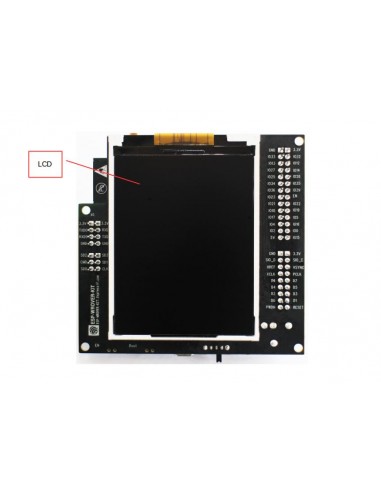- Out-of-Stock




ESP-WROVER-KIT targets the high performance requirements with 4.5 MB of RAM and a dual core 240 MHz CPU. Create Internet cameras, smart displays or Internet radios with this highly integrated ultra low power module by connecting LCDs, cameras, microphones and codecs to it. Have fun!
This user guide shows how to get started with ESP-WROVER-KIT V3 development board including description of its functionality and configuration options. You can find out what version you have in section ESP-WROVER-KIT.
If you like to start using this board right now, go directly to section Start Application Development.
The ESP-WROVER-KIT is a development board produced by Espressif built around ESP32. This board is compatible with ESP32 modules, including the ESP-WROOM-32 and ESP32-WROVER. The ESP-WROVER-KIT features support for an LCD and MicroSD card. The I/O pins have been broken out from the ESP32 module for easy extension. The board carries an advanced multi-protocol USB bridge (the FTDI FT2232HL), enabling developers to use JTAG directly to debug the ESP32 through the USB interface. The development board makes secondary development easy and cost-effective.
Note
ESP-WROVER-KIT V3 integrates the ESP32-WROVER module by default.
Block diagram below presents main components of ESP-WROVER-KIT and interconnections between components.

ESP-WROVER-KIT block diagram
The following list and figures below describe key components, interfaces and controls of ESP-WROVER-KIT board.
ESP-WROVER-KIT is compatible with both ESP-WROOM-32 and ESP32-WROVER. The ESP32-WROVER module features all the functions of ESP-WROOM-32 and integrates an external 32-MBit PSRAM for flexible extended storage and data processing capabilities.
Note
GPIO16 and GPIO17 are used as the CS and clock signal for PSRAM. To ensure reliable performance, the two GPIOs are not broken out.

ESP-WROVER-KIT board layout - front
